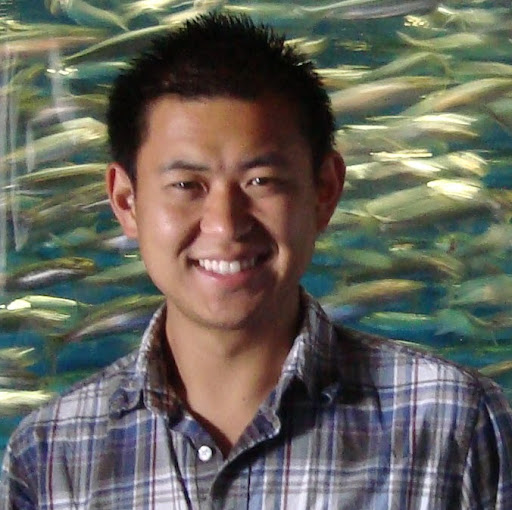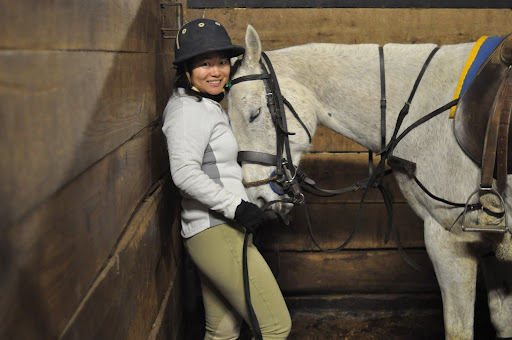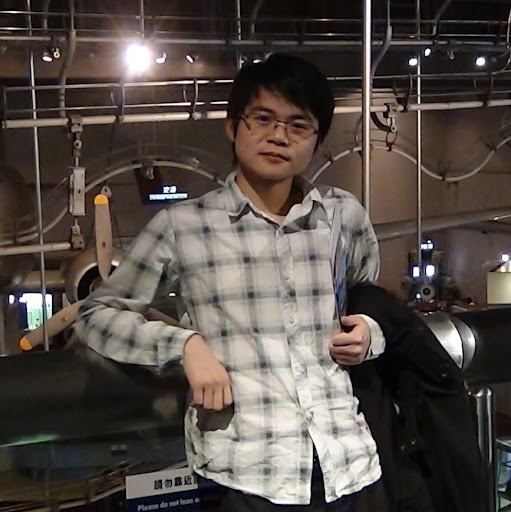Liang Zhang
age ~40
from El Cerrito, CA
Liang Zhang Phones & Addresses
- El Cerrito, CA
- Albany, CA
- San Diego, CA
Isbn (Books And Publications)

Proceedings of the Twentieth International Cryogenic Engineering Conference (ICEC 20): Beijing, China, 11-14 May 2004
view sourceAuthor
Liang Zhang
ISBN #
0080445594

La Naissance Du Concept De Patrimoine En Chine: XIX-XXe Siecles
view sourceAuthor
Liang Zhang
ISBN #
2862220477
Medicine Doctors

Liang Zhang
view sourceSpecialties:
Anesthesiology
Work:
Covenant Home Center Operating Room
3421 W 9 St FL 2, Waterloo, IA 50702
(319)2728000 (phone), (319)2727313 (fax)
3421 W 9 St FL 2, Waterloo, IA 50702
(319)2728000 (phone), (319)2727313 (fax)
Languages:
English
Description:
Dr. Zhang works in Waterloo, IA and specializes in Anesthesiology. Dr. Zhang is affiliated with Covenant Medical Center.

Liang Zhang
view source
Liang Zhang
view sourceName / Title
Company / Classification
Phones & Addresses
JACKIE DRAGON LLC
JACKIE MISO, LLC
President
STRIDER ENTERPRISES
186 Espanas Gln, Escondido, CA 92026
Us Patents
-
Clustering Cookies For Identifying Unique Mobile Devices
view source -
US Patent:8396822, Mar 12, 2013
-
Filed:Dec 23, 2010
-
Appl. No.:12/978186
-
Inventors:Anirban Dasgupta - Berkeley CA, US
Liang Zhang - Fremont CA, US
Maxim Gurevich - Cupertino CA, US
Achint Oommen Thomas - Buffalo NY, US
Belle Tseng - Cupertino CA, US -
Assignee:Yahoo! Inc. - Sunnyvale CA
-
International Classification:G06N 5/02
-
US Classification:706 50
-
Abstract:Embodiments are directed towards clustering cookies for identifying unique mobile devices for associating activities over a network with a given mobile device. The cookies are clustered based on a Bayes Factor similarity model that is trained from cookie features of known mobile devices. The clusters may be used to determine the number of unique mobile devices that access a website. The clusters may also be used to provide targeted content to each unique mobile device.
-
Minimizing Call Drops During A Serving Cell Change
view source -
US Patent:8565188, Oct 22, 2013
-
Filed:Dec 21, 2010
-
Appl. No.:12/974886
-
Inventors:Yun Lin - San Diego CA, US
Bhadarinath B. Manjunath - Carlsbad CA, US
Prashanth Sharma - San Diego CA, US
Liang Zhang - San Diego CA, US -
Assignee:QUALCOMM Incorporated - San Diego CA
-
International Classification:H04W 4/00
H04W 36/00 -
US Classification:370331, 370328, 455436, 455437
-
Abstract:A method for minimizing call drops during a serving cell change is disclosed. A first measurement report message is received from a user equipment (UE) requesting to change an active set of the UE. A second measurement report message is received from the UE indicating a change of a best cell and requesting a change of a serving cell to a target cell. The second measurement report message is processed before the first measurement report message is completely processed.
-
System And Process For Transmission Sequence Number Management In An Intra-Node B Unsynchronized Serving Cell Change
view source -
US Patent:20110317642, Dec 29, 2011
-
Filed:Jun 23, 2011
-
Appl. No.:13/167199
-
Inventors:Srinivasa R. Eravelli - San Diego CA, US
Hailiang Cai - San Diego CA, US
William L. Atkinson - Ontario, CA
Sumanth Govindappa - San Diego CA, US
Sivaram S. Palakodety - San Diego CA, US
Shenoy H. Gurudutt - San Diego CA, US
Liang Zhang - San Diego CA, US -
Assignee:QUALCOMM Incorporated - San Diego CA
-
International Classification:H04W 72/04
-
US Classification:370329
-
Abstract:Various aspects of the disclosure provide an intra-Node B unsynchronized serving cell change enabling the typical loss of packets resulting from such a procedure to be reduced or eliminated. In one example, when a UE ceases listening to a downlink channel from a first cell provided by a Node B and starts to configure its receiver to listen to a downlink channel from a second cell provided by the Node B, a continued incrementing of a sequence number may be stalled in the transmission of packets to the UE. That is, the TSN space may be stalled, such that HARQ retransmissions recur beyond the preconfigured maximum number of retransmissions, until the UE indicates that the serving cell change is complete. In another example, the transmission of packets to the UE from the first cell may be halted until the UE indicates that the serving cell change is complete.
-
System And Method For Reducing Resets During Handovers In A Single Frequency Dual Carrier Wireless Communication System
view source -
US Patent:20120147869, Jun 14, 2012
-
Filed:Dec 8, 2011
-
Appl. No.:13/315244
-
Inventors:Murtuza T. Chhatriwala - San Diego CA, US
Srinivasa R. Eravelli - San Diego CA, US
Hailiang Cai - San Diego CA, US
Sumanth Govindappa - San Diego CA, US
Liang Zhang - San Diego CA, US
Sivaram S. Palakodety - San Diego CA, US -
Assignee:QUALCOMM INCORPORATED - San Diego CA
-
International Classification:H04W 92/00
-
US Classification:370338
-
Abstract:A method, apparatus, and computer program product can provide for procedures at an access terminal for handling the delivery of packets from the MAC entity to the RLC entity, with an aim to reduce the occurrence of RLC resets that might otherwise be caused by out-of-order processing of control packets following a serving cell change. In one example, a MAC entity may insert an identifier into a packet delivered up to the RLC entity, to indicate whether the packet arrived from the current primary serving cell. In another example, a serving cell change procedure may include steps to flush a queue at the MAC entity and kill any running reordering release timers. In these ways potential problems caused by out-of-order control packets can be reduced or avoided.
-
System And Method For Performing A Radio Link Control (Rlc) Reset In A Downlink Multipoint System
view source -
US Patent:20120163315, Jun 28, 2012
-
Filed:Dec 21, 2011
-
Appl. No.:13/333999
-
Inventors:Sumanth Govindappa - San Diego CA, US
Srinivasa R. Eravelli - San Diego CA, US
William L. Atkinson - Markham, CA
Liang Zhang - San Diego CA, US
Hailiang Cai - San Diego CA, US
Danlu Zhang - San Diego CA, US -
Assignee:QUALCOMM Incorporated - San Diego CA
-
International Classification:H04W 72/04
H04W 88/08 -
US Classification:370329, 370328
-
Abstract:A method and apparatus for wireless communication may provide an RLC reset procedure tailored for a multipoint HSDPA system utilizing a plurality of disparate Node Bs to provide an RLC flow from an RNC to a UE. Some aspects of the disclosure provide for a flush request to be provided to each of a plurality of Node Bs utilized as serving cells in the multipoint HSDPA system, so that stale packets are not retained in internal buffers at the Node Bs following the RLC reset procedure. In some examples, the RLC reset procedure is only completed after confirmation that the flush of the internal buffers has been completed. Confirmation may be explicitly provided by each Node B utilizing a backhaul interface, or may be implicitly determined utilizing timers or signaling between the respective Node Bs.
-
Systems And Methods For Sequence Design
view source -
US Patent:20220269951, Aug 25, 2022
-
Filed:Feb 24, 2021
-
Appl. No.:17/184505
-
Inventors:- Sunnyvale CA, US
Liang ZHANG - Fremont CA, US
Ziyu LI - South San Francisco CA, US
Kaibo LIU - Sunnyvale CA, US
Boxiang LIU - Sunnyvale CA, US
Liang HUANG - Mountain View CA, US -
Assignee:Baidu USA LLC - Sunnyvale CA
-
International Classification:G06N 3/12
A61K 39/215 -
Abstract:A messenger RNA (mRNA) vaccine has emerged as a promising direction to combat the COVID-19 pandemic. This requires an mRNA sequence that is stable and highly productive in protein expression, features to benefit from greater mRNA secondary structure folding stability and optimal codon usage. Sequence design remains challenging due to the exponentially many synonymous mRNA sequences encoding the same protein. The present disclosure presents embodiments of a linear-time approximation (LinearDesign) reducing the design to an intersection between a Stochastic Context Free Grammar (SCFG) and a Deterministic Finite Automaton (DFA). Embodiments of the LinearDesign may implement an mRNA sequence design using much reduced time with very limited loss. Various methodologies, e.g., finding alternative sequences based on k-best parsing or directly incorporating codon optimality, are presented for incorporating the codon optimality into the design. Embodiments of the LinearDesign may provide efficient computational tools to speed up and improve mRNA vaccine development.
-
Learning To Rank With Alpha Divergence And Entropy Regularization
view source -
US Patent:20210319033, Oct 14, 2021
-
Filed:Apr 9, 2020
-
Appl. No.:16/844909
-
Inventors:- Redmond WA, US
Liang Zhang - Fremont CA, US -
International Classification:G06F 16/2457
G06F 16/953
G06N 20/00
G06N 5/04 -
Abstract:In an example embodiment, α-divergence is used to replace cross-entropy or KL-divergence as the loss function for learning-to-rank tasks in an online network. Additionally, in an example embodiment, entropy regularization is used to encourage score diversity for documents of the same relevance level. The result of both these approaches it to reduce or eliminate technical problems encountered using prior art techniques.
-
Entity Resolution Techniques For Matching Entity Records From Different Data Sources
view source -
US Patent:20200409945, Dec 31, 2020
-
Filed:Jun 28, 2019
-
Appl. No.:16/457666
-
Inventors:- Redmond WA, US
Liang Zhang - Fremont CA, US
Haifeng Zhao - San Jose CA, US
Jiashuo Wang - Mountain View CA, US
Aparna Krishnan - Santa Clara CA, US
Anand Kishore - San Jose CA, US
Chencheng Wu - Los Altos CA, US
John P. Moore - San Francisco CA, US -
International Classification:G06F 16/242
G06F 16/2457
G06F 16/25 -
Abstract:Entity resolution techniques for matching entity records from different data sources are provided. In one technique, an entity record from a source database is identified along with multiple data items included therein. Each data item corresponds to an attribute of multiple source attributes. For one of the data items that corresponds to a first source attribute, multiple target attributes are identified. A first query is generated that includes the data items and associates the data item with each of the multiple target attributes. A second query that is different than the first query is also generated. Two searches are performed of a target database: one based on the first query and the other based on the second query. A scoring model generates multiple scores, one for each search result. It is determined whether the entity record matches an entity record in the target database based on the set of scores.
Lawyers & Attorneys

Liang Zhang - Lawyer
view sourceAddress:
Shulun & Partners (Shanghai) Law Firm
Licenses:
New York - Due to reregister within 30 days of birthday 2011
Education:
Chicago-Kent College of Law, Iit

Liang Zhang - Lawyer
view sourceOffice:
Davis Polk & Wardwell LLP
Specialties:
Tax
ISLN:
1000248654
Admitted:
2017
University:
Lafayette College, B.S., 2013
Law School:
Harvard Law School, J.D., 2016
Resumes

Liang Zhang Daytona Beach, FL
view sourceWork:
SpaceX
Hawthorne, CA
Jan 2013 to Jul 2013
Avionics/Hardware Design Intern Air Force Research Laboratories
Rome, NY
Apr 2012 to Aug 2012
Engineering/Research Analyst Intern dB Control
Fremont, CA
Apr 2009 to Apr 2010
Electronics Technician
Hawthorne, CA
Jan 2013 to Jul 2013
Avionics/Hardware Design Intern Air Force Research Laboratories
Rome, NY
Apr 2012 to Aug 2012
Engineering/Research Analyst Intern dB Control
Fremont, CA
Apr 2009 to Apr 2010
Electronics Technician
Education:
University of California
Irvine, CA
2009
B.S. in Electrical Engineering Embry-Riddle Aeronautical University
Daytona Beach, FL
M.S. in Electrical and Computer Engineering
Irvine, CA
2009
B.S. in Electrical Engineering Embry-Riddle Aeronautical University
Daytona Beach, FL
M.S. in Electrical and Computer Engineering

Liang Zhang San Lorenzo, CA
view sourceWork:
Golden Gate Optical Manufacture
Hayward, CA
Sep 2008 to Jan 2012
Shift manager and new employee trainer Internet seller
Jan 2006 to Sep 2008
Hayward, CA
Sep 2008 to Jan 2012
Shift manager and new employee trainer Internet seller
Jan 2006 to Sep 2008
Education:
City College of San Francisco
San Francisco, CA
May 2012
Associate in Biological Science
San Francisco, CA
May 2012
Associate in Biological Science
Myspace
Googleplus

Liang Zhang
Lived:
San Francisco, CA
London, UK
Barcelona, Spain
Beijing, China
London, UK
Barcelona, Spain
Beijing, China
Work:
AnswerLab - Consultant (2010)
LinkedIn - User Experience Researcher (2009-2010)
HSBC - Senior Marketing Analyst (2006-2008)
LinkedIn - User Experience Researcher (2009-2010)
HSBC - Senior Marketing Analyst (2006-2008)
Education:
University of California, Berkeley - Economics, London School of Economics - International Management

Liang Zhang
Education:
Universiteit van Tilburg, Peking University, Harbin Institute of Technology
Tagline:
I have an attitude and I know how to use it.

Liang Zhang
Education:
Harbin Institute of Technology

Liang Zhang
Work:
Spun Tech Industry - Summer Intern
Education:
North Carolina State University

Liang Zhang
Education:
Yale University

Liang Zhang
Education:
Yale University

Liang Zhang
Education:
Huazhong University of Science and Technology

Liang Zhang
Flickr
Plaxo

Zhang Liang
view sourceNottingham, UKPast: Nokia Siemens Networks, Siemens Communications, Huawei Technologies, UTStarcom, ...

zhang liang
view sourcehangzhou一个感性的完美主义者
Classmates

Liang Zhang
view sourceSchools:
Albert Enstine High School Wheaton MD 1993-1997
Community:
Frances Hunt, Sonia Carpenter, Stuart Harris, Barry Mitzner

Liang Zhang
view sourceSchools:
Shanghai American School Shanghai China 1998-2000
Community:
David Giedt, Glenda Case, Raazia Bokhari, Eugene Wu

Liang Zhang
view sourceSchools:
Zhejiang University Hangzhou China 1993-1997
Community:
Lisa Chen, Feng Feng, Dongwei Wang, Wu Hai

Liang Zhang (Hongchen)
view sourceSchools:
Beijing Bayi High School Beijing China 1992-1996

Liang Zhang
view sourceSchools:
Cleveland Hill Elementary School Cheektowaga NY 1993-1996
Youtube

Zhang Dg Liang
view source
Dg Liang Zhang
view source
Liang Ivy Zhang
view source
Zhang Liang
view source
Liang Tom Zhang
view source
Lim Liang Zhang
view source
Wen Liang Zhang
view source
Liang Zhang
view sourceGet Report for Liang Zhang from El Cerrito, CA, age ~40














